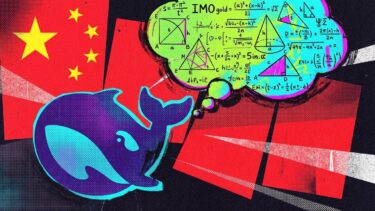Nvidia delivered another record quarter, but the ongoing US export ban on AI chips to China is cutting deep into its bottom line. CEO Jensen Huang is warning that the policy could have serious consequences for the US tech industry.
Nvidia reported $44.1 billion in revenue for the first quarter of its 2026 fiscal year, up 12% from the previous quarter and 69% year-over-year. The company's gross margin came in at 60.5% (non-GAAP: 61.0%).
But the latest US export restrictions on AI chips to China are leaving a noticeable dent in Nvidia's results. The company sold $4.6 billion worth of H20 products in the quarter, but had to forgo another $2.5 billion in planned shipments. Without the export ban, Nvidia says its adjusted gross margin would have reached 71.3% instead of 61%, the company says.
The company also recorded a $4.5 billion write-down on H20 inventory and purchase commitments. Since mid-April 2025, the US government has required a special license to export these chips.
The ban has effectively ended Nvidia’s Hopper data center business in China. "We cannot reduce Hopper further to comply," Huang said. "As a result, we are taking a multibillion dollar write off on inventory that cannot be sold or repurposed." While Nvidia is "exploring limited ways to compete," he added, "Hopper is no longer an option."
H20 chips had been custom-built for China to sidestep previous restrictions, but the new licensing requirement has cut off that path as well—shutting Nvidia out of the Chinese data center market altogether.
Huang: Export rules strengthen China's AI industry
Huang criticized the US policy, saying it was "based on the assumption that China cannot make AI chips. That assumption was always questionable, and now it's clearly wrong." He emphasized that China "has enormous manufacturing capability" and "moves on with or without US chips."
Rather than slowing China's progress, the restrictions have helped accelerate it. "Shielding Chinese chipmakers from US competition only strengthens them abroad and weakens America's position," Huang said. He also warned, "The platform that wins China is positioned to lead globally."
For the US, the stakes go beyond hardware. "The AI race is not just about chips. It's about which stack the world runs on," he said. "As that stack grows to include six g and quantum, US global infrastructure leadership is at stake."
He also pointed to the growing role of Chinese open-source models like Deepseek. These compute-heavy reasoning models are "driving a step function surge in inference demand." According to Huang, "America wins when models like DeepSeek and QN runs best on American infrastructure," because that drives usage, feedback, and improvement on US platforms.
Huang stressed that maintaining US leadership will require access to global talent. "Export controls should strengthen US platforms, not drive half of the world's AI talent to rivals," he said.
He argued that collaboration—not isolation—will be key, especially with so many top AI researchers based in China. Without it, the US risks losing its competitive edge.
Recent research supports that concern. A report from the Hoover Institution and Stanford HAI shows that Chinese AI startup DeepSeek is outperforming Western benchmarks with a team composed almost entirely of China-based researchers. The study describes a "reverse brain drain," with many scientists trained in the US now returning to China and strengthening its AI ecosystem.
China has also reportedly proposed a travel ban to prevent its top AI experts from leaving the country amid rising tech tensions.




